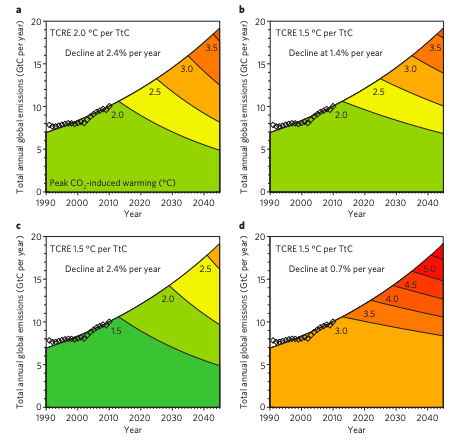Credible Net-Zero Pathways for Organizations
Nathan Renaud, Sustainability Impact Data Manager at Green Economy Canada, gives advice on how corporations can take credible actions towards net-zero through reductions, carbon credits, and targeting Scope 3.
It seems like every day an organization announces its new net-zero commitments. We know from science that this is needed to avoid the most disastrous effects of climate change. However, skepticism is abound regarding the strategies underlying these commitments.
Considering that most are voluntary and the current mechanisms for governance and accountability leave much discretion to the companies making the commitments, it is not certain that these commitments will truly achieve the decarbonization needed.
Many commitments lack detailed plans outlining the actions that would create the impact necessary to achieve their target or rely on unrealistic or unproven solutions. As a result, many amount to little more that greenwashing, only achieving the semblance of corporate virtuosity.
Credible net-zero pathways that are aligned with global net-zero efforts and that genuinely stand a chance for success should have the following characteristics: a priority for reductions, a holistic approach that includes Scope 3, and the judicious use of carbon offsets.
“Action is the only way to get to net-zero”
Nathan Renaud
Reductions first and fast
While net-zero pathways can differ from organization to organization and depend on the nature of the business activities, there is sound scientific evidence that the focus should be on prioritizing emissions reductions emissions within your value chain before exploring other measures and doing so in a manner that reduces as much and as fast as possible.
The reality is that global temperature change is driven by cumulative emissions, as time goes on and more emissions accumulate, it becomes harder to keep temperatures below our targets. Scientists estimate that every year of delayed climate action decreases the time to reach net-zero in the 1.5C warming scenario by two years.

Addressing these emissions aggressively and with priority also provides optionality to adjust with our evolving scientific understanding of our planet and changing economics. For example, having to respond to the discovery of carbon feedback cycles like the thaw of permafrost or dramatic changes in energy prices due to geopolitical events.
Lengthening that timeline as much as possible opens the opportunity for learning and scaling effects have a chance to develop, which allows clean technology to be deployed more cost-effectively and reduces investment risks.
Focusing on the emissions that are under your control and using that direct influence to implement impactful mitigation measures should be the first priority in credible net-zero pathway design.
A holistic approach that includes Scope 3
Targets focused only on Scope 1 and 2 emissions are common since they cover elements that are under the control of an organization and are typically mandatory categories for many reporting programs. But they leave out a large part of the picture.
This elephant in the room can be quite large and imposing in some industries – for example, in commercial real estate where Scope 3 emissions from their value chain tend to make up around 85% of an organization’s footprint.
The challenges impeding widespread participation in Scope 3 accounting are valid. Accessing data across complex value chains where carbon accounting sophistication varies across the players can be difficult. But momentum is starting to build in terms of companies engaging with the entities both upstream and downstream.
Having the systems in place to account for your organization’s emissions and the ability to report on them is starting to become an important consideration in procurement and a competitive advantage.
Developing Scope 3 targets can unlock powerful opportunities for an organization to mitigate risks in its value chain, discover innovative business models, and demonstrate leadership while contributing in a meaningful way to a global movement toward net-zero.

Judicious use of carbon credits
Some current-day net-zero pathways rely heavily on carbon offsets or other related instruments or are vague (unintentionally or intentionally) about the role they play in their decarbonization plans. The role these instruments play in balancing the residual emissions that are hardest to eliminate is essential in delivering net-zero. However, there are questions that must be addressed about their credibility and effectiveness.
Notable examples of carbon offset schemes that fail to guarantee real emissions reductions have issued credits for the protection of trees under no threat of deforestation and for short-term high-risk carbon storage projects with negative unintended consequences.

Carbon offsets must be additional, meaning that the reductions would not have occurrence otherwise in the absence of the instrument. They must not be overestimated and use appropriate calculation methodologies. They must be permanent so that the reductions cannot be reversed, even hundreds of years from now, which would negate the original benefit. They cannot be claimed by another entity or double counted. And they must not be associated with significant social or environmental harm.
The Stockholm Environment Institute & Greenhouse Gas Management Institute has established these five characteristics to be the hallmarks of high-quality offsets and have prepared a very handy guide for navigating the carbon offset landscape. A large range of programs run by independent agencies also exist, like the American Carbon Registry and The Gold Standard, who set standards and verify offsets projects, though participation in these programs is largely voluntary.
We still have work to do in terms of improving the standards and governance of the carbon offset market to reach a state where offsets can be reputably applied at scale. Even then, they still belong as just one element of a comprehensive net-zero plan, behind aggressive action to reduce emissions inside an organization’s own value chain.
The increasing number of net-zero commitments being made indicates that the science is being heard and that organizations are looking at their business models and considering how compatible they are with a low-carbon future. Commitments are great and should be encouraged– but action is the only way to get to net-zero.
The strategy behind that action must prioritize emissions reductions, take a holistic approach that considers the entire value chain, and only look to carbon offsets as a secondary measure for residual emissions after other efforts have been exhausted.













